Not Many Recent Eagle Sightings… and No Nests Yet
By Lawrence Meyer
Beginning in October 2014, the conspicuous presence of two mature bald eagles that could be seen almost daily perched in trees along the Neponset River from the parking lot at Milton Landing sparked curiosity that the pair could be nesting nearby. And that would be neat because bald eagles have likely not nested in greater Boston in over a hundred years.
Since mid-April of 2016, the question has been not, “are they nesting?” but now “where did they go?”
That’s because after about 20 months of consistent habitation of their perches, since spring 2016 they’ve not been seen again at Milton Landing, or reported from nearby birding sites like Dorchester or Quincy from whence many birders were also seeing two eagles that were likely the Milton Landing pair.
However, like most romances, the story is a little more complicated than appears at first. So some background is needed.
First off, from October 2014 until mid-June 2015, the two eagles being seen were surely the same pair. Then from mid-June until December 2015, there was just one. This was explained to me only in December when I learned that in June one un-banded male had been found dead in Milton Cemetery, apparently killed by another eagle. I had not heard of this type of behavior – eagles killing other eagles – before but apparently it does happen. Did the loss of male mate number 1 mean no eagle nesting in the spring of 2016? What I heard was that eagles mate for life but mourn not a minute. Would the surviving bird mate up with male mate number 2, who was presumably the Milton Cemetery “killer” bird?
My habit had become to check the Milton Landing perches about sunrise any day I could. And the Sunday after Christmas two eagles were there! But one was the regular and the second was an immature, whom I had also seen on 3-4 occasions since October 2014. On January 3rd the mature and immature were even perched together in the same tree.
On January 6th, however, the second eagle was a mature, and perched with the female. The next day both were again present. On the 8th the immature also flew over while I was there watching the two matures.
From that day mid-April the daily Milton Landing eagle show was back on. This pair was bonding and presumably plotting nesting, which would require they were about to build a nest or fix the old one, if there was an old one. Eagles typically begin nesting and egg laying in late winter and early spring. For about three weeks, from March 23rd to April 17, the pattern changed. They were there much less frequently, which would be consistent with their needing to attend a nest elsewhere.
The weekend of April 16 and 17 was spectacular for eagle viewing, however. I stopped by at 9: 15 on the 16th and as I expected there were no eagles in the usual perches. But in a few minutes an eagle size bird flew in from the east and soared over the marsh. It was an immature! Soon it flew toward the houses behind the perch trees and a second mature eagle rose up from somewhere to fly around with the immature. The mature eagle perched.
I had to drive my daughter somewhere but I went right back. When I got back, one mature was soaring right over the parking lot. Over toward Forbes Wood were four big raptors. One separated and flew over towards me – the immature. He soared over the parking lot for a while and then flew north. Of the three remaining big birds, two were red tails that were dive-bombing what I think was the second mature eagle. But this group of 3 was very far away. I think one of these was an eagle only because it was so much bigger.
Since April I have seen the immature twice, but no more two eagle days at Milton Landing.
Checking eBird
To find out where they might have gone I turned to Cornell University’s eBird website, where birders go to post their sightings. Its data on Bald Eagles showed that Milton Landing was the epicenter of the vast majority of eagle sighting reports in the area from January 6 (and for many months previously) onward. But the last was from April 17th, the same date I saw three.
There have been are ten sightings of eagles from May 1 to date (early August) in the area and six from the territory I presumed was that of the Milton Landing eagles, that is, east of Milton Landing to saltwater and south to the Great Blue Hills. Four are from west of Milton Landing. These four sightings I think are likely not of the Milton Landing eagles because concurrent with the presence of the eagles at Milton Landing, that is, from October 2014, there were many reports of a solitary adult at Jamaica Pond, Arnold Arboretum, Forest Hills Cemetery, Millennium Park and Chestnut Hill Reservoir. In my mind this was the JayPee eagle.
Another reason I thought the JayPee eagle was not one of the eagles at Milton Landing was that when I saw the eagles arrive or depart they almost always went to and came from the east, not the west.
From the whole region there are six sightings in May, none in June, 1 in July, and 3 in August. Of the six sightings in the presumed territory, all are of immatures; at Trailside Museum, Webb State Park, Georges Island, Hull, and Plymouth. The Georges Island and Hull sightings both occurred on August 4th and were likely the same bird.
So while there is an immature in the presumed territory, not one mature eagle has been seen in it since April 17th.
Adults have been seen in what I presumed was the territory of the JayPee eagle. One adult on May 7 in Forest Hills Cemetery, 1 adult on May 17th in Dedham, and two adults perched together in Millennium Park on August 2nd. One “possible immature” was seen at Arnold Arboretum on May 8th.
What the sightings suggest is that the two Milton Landing eagles could be nesting somewhere, but the nest has not been found in the presumed territory. Or they could have completely left the area as a pair. I think it more highly likely that the JayPee eagles now being seen are the “old” JayPee eagles, but it’s not impossible that the Milton Landing eagles always were the same as the JayPee eagles. I tend to discount this, however, because 1. the Milton Landing pair showed a marked preference for the Neponset and its saltwater estuary, and 2. the Neponset and its saltwater estuary is a much more rich habitat for food than Jamaica Pond, the Charles River, and Chestnut Hill Reservoir.
Milton Landing was the ipecentrer of the vast majority of eagel sighting reports from January 6 onward. But the last was from April 17th. On August 4 an immature was seen at Georges’ Island and also at nearby Hull.
Photo credit: Craig Gibson

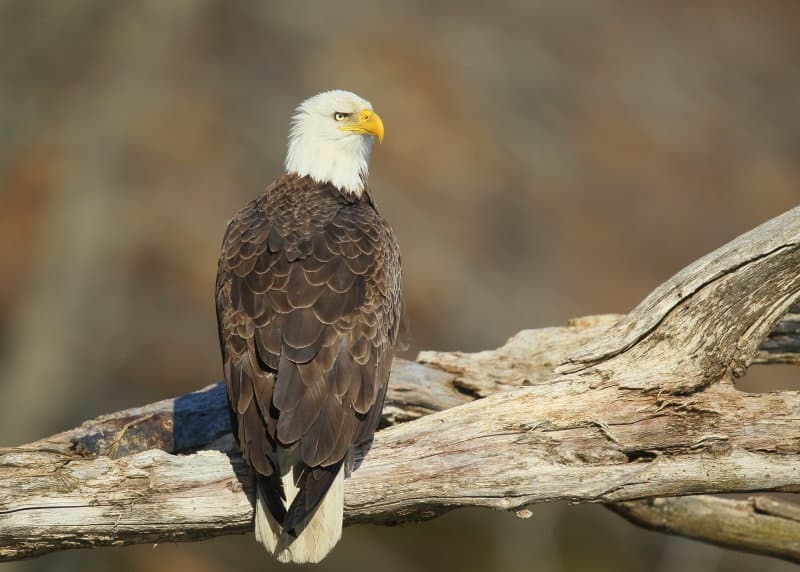
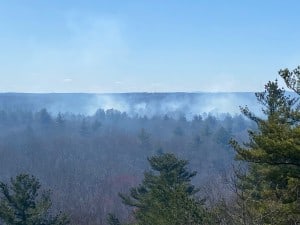




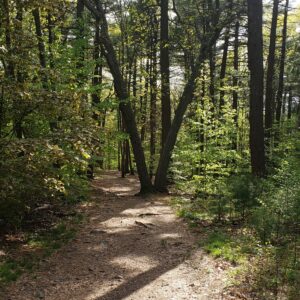
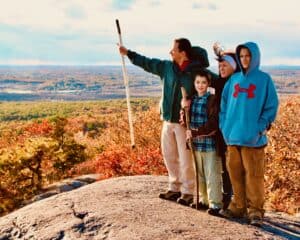

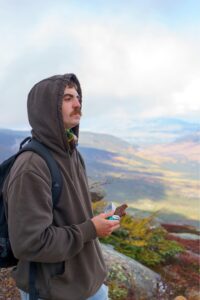
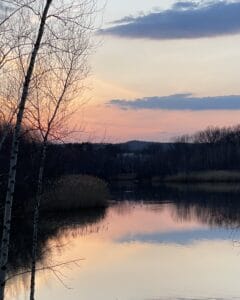
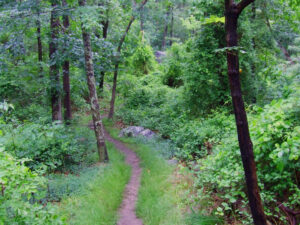
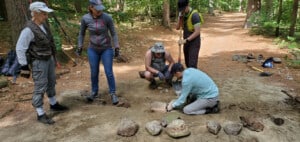

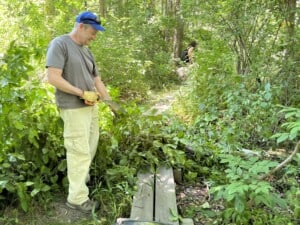
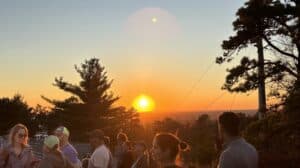
Pair of bald eagles flying over West Roxbury High School today.
I saw one yesterday on the Neponset River by the Star Market in Dorchester!
Wow! So amazing. Thanks for letting us know!
I saw a bald eagle from my office window on 1/16/2020 in Quincy. It flew over Batterymarch Park and was headed towards the Blue Hills
Wow! That sounds amazing. And sounds like a smart eagle to head for the Blue Hills!
Bald Eagle flying low over Union Street rotary in Braintree, heading away from Pond Meadow Park and surrounding marsh. November 25, 2018 at noon. Wow!
So great that you saw it! Thanks for letting us know!
I saw a lone bald eagle glide through Andrews Park in East Milton today, July 20th at about 7:00 PM. Big, beautiful, bird. Only about 25 feet off the ground. Came in from the East and exited to the South.
Wow. So cool. Thanks for letting us know!
hey All, this is a really old article but there are two bald eagles still roaming around the granite street bridge area of the neponset river-walk as of May 7th, 2018. I work nearby and get the privilege of occasionally seeing them soaring around. Today I actually watched one get chased off by a much smaller raptor. (I Think it was the redtail that lives in the cemetery near by. )
So great to get the update! Thanks for letting us know!
For the past week a bald eagle has been hunting Black Rock Beach and Straits Pond in Cohasset/Hull. He was hunting ducks on the frozen pond this morning. 1-8-2018
So cool! Thanks for the report!
March 28, bald eagle seen perched on tree top at Neponset river over the recently burnt area. Very cool!!! The bird hung there for quite a while. Went home to get spotting scope but eagle gone by the time we got back. We could see him back at the Milton landing area. Always a thrill to see them and hope to see them for many more years to come on the Neponset river.
It’s really wonderful! Thanks for the report!
Today and yesterday (3/19 + 3/20), bald eagle seen in-flight over the Braintree split, on the 128 side. That’s one big bird! Very exciting!!
That’s great! Thanks for letting us know
I work at a shop on the border of Randolph and Braintree. Three days ago around lunch time, I saw a gigantic bald eagle fly across our yard towards the reservoir. It was the coolest thing I have ever seen.
So cool!
I just saw a huge bald eagle over rt 93 ..it flew over the highway near the river just before gallivan blvd in milton ma.
So cool! Thanks for letting us know!
Saw a magnificent bald eagle flying over the Milton marsh at the Neponset curve in East Milton this morning. Stunning sight!!!!
Wonderful! Thanks so much for letting us know.